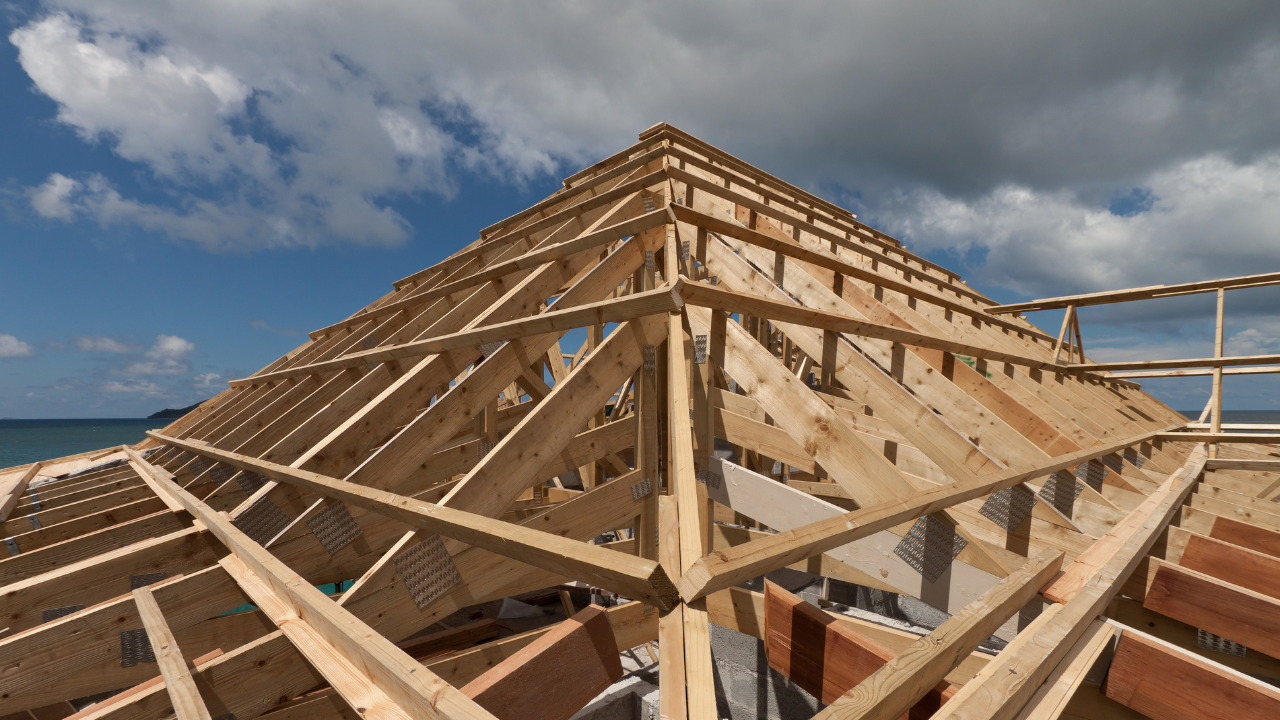A general rule of thumb states that you can hang anything weighing between five and 10 pounds from the roof truss. A structural engineer should be consulted if you plan to build a roof truss for the garage.
Roof trusses are designed to support a building’s roof using the least amount of material possible, reducing the labor and material costs associated with erecting the roof.
Trusses are designed to handle a specific weight load in a specific fashion; thus, adding much more weight without endangering stability and safety is not an option. A certain amount of weight can be supported by roof trusses. The structure is at risk if this load is surpassed.
Because of this, homeowners must know how much stress their roof truss can support before placing any weight on it. It is strongly advised not to strain the limitations of the material.
Table of Contents
Know About The Types Of Load Before Hanging To Roof Truss
Roof trusses are constructed to distribute the object’s weight across the building’s outward and downward sides. Top chords enable this to be accomplished. These upper chords are horizontally intertwined with the lower chords.
Once more, these bottom horizontal chords are quite important for carrying the stresses.
Temporary Load
The structure is under temporary pressure from a load. Precipitation, wind, and other live loads are a few examples. Engineers must consider the live load requirements for local building codes when designing the roof truss and construct it appropriately.
The load capacity will often exceed thirty pounds if the bottom chords serve as floor joists for residential space.
Permanent Load
This kind of load is constant, as opposed to living loads. Some examples of busy roads are the load of the structure, the load of the materials, and the load of the stored goods. Roof trusses are constructed to support both living and dead loads. The building’s structure will jeopardize if the total load surpasses the cumulative limit.
A roof truss’s dead load capacity is determined by the materials used to construct it, such as the drywall insulation. To determine the precise dead load of the roof truss, you must also consider the hanging weights.
Things To Consider Before Hanging The Weight To The Roof Truss
Roof Truss Design
Roof trusses distribute the weight burden to the bearing walls of the building to support the weight of the roof. They achieve this using top chords, sloping components that run from the roof’s apex to the tops of the outer walls at the eaves.
A bottom chord that runs horizontally from eave to eave connects the upper chords and prevents the top chords’ load from forcing the outside walls outward. The bottom chord supports a portion of the roof’s weight using inner truss support components.
The inner support elements transfer weight from the top chords to the bottom. Weight added to the bottom chord will likely be heavier than the truss was designed to carry and endanger its ability to support the roof.
International Building Codes
Understanding your local construction code is necessary before constructing the roof truss for your garage area. The International Residential Code, or IRC, is typically followed by these local building codes.
The IRC states that a roof truss’s minimum live load capability for non-sleeping areas should be about 40 pounds per square foot. Once more, if it was designed for sleeping quarters, the weight should be around 30 pounds per square foot.
You must also be aware of the floors’ deflection in addition to this.
Ceiling Trusses Also Matter
You have fewer possibilities if there isn’t another store directly above your garage. As there is no floor above in this instance, a much weaker truss web is not required.
The dead load, which ranges between 5 and 10 pounds per square foot, on the bottom chord of a truss depends on the weight of the materials linked to it, such as the drywall on the ceiling.
The dead load must be increased to account for all weight supported by the truss; if the total weight is too much, the truss will become unstable. Local construction codes dictate the required live loads that a truss can support.
A typical live floor load for a residential area is roughly 40 pounds per square foot, even if the lower chord of a roof truss serves as a floor joist, as in an attic room.
Measure The Strength Of The Truss
A roof truss design’s compliance with local building codes is assessed using a span table. Truss strength and stiffness are listed in this table. These values are typically employed by engineers when creating roof trusses for structures.
You must consider the roof truss’s dead loads and live loads in addition to the local building code and span tables.
Bottom Line
You must first take your floor’s lumber grade, size, span, and spacing into account before determining the load restrictions. This information can be found on the floor joist’s stamp. On average, you can hang 5 to 10 pounds from a roof truss.
Don’t forget that hiring a structural engineer is advised if you intend to construct a roof truss for your garage. The stability of your structure may be in jeopardy if all the building codes and procedures do not adhere.





